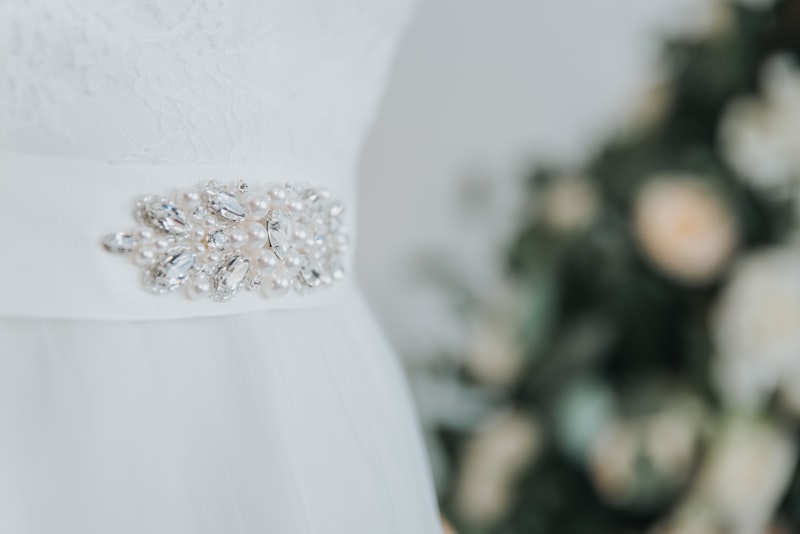Exploring Embroidery Techniques on Bridal Fabrics: A Comprehensive Guide
Exploring Embroidery Techniques on Bridal Fabrics: A Comprehensive Guide
Introduction to Embroidery Techniques on Bridal Fabrics
Bridal fabrics are the heart and soul of any wedding dress, and to elevate their beauty, embroidery techniques play a crucial role. The intricate art of embroidery can transform simple fabrics into stunning masterpieces that will leave lasting impressions. In this article, we will delve into various embroidery techniques used on bridal fabrics, examine the types of fabrics ideal for bridal wear, and provide tips on choosing the right designs based on personal preferences.
The Importance of Choosing the Right Fabrics
When it comes to bridal wear, the fabric choice is paramount. Different fabrics provide varying levels of support, drape, and texture, all of which influence the overall look of the wedding gown. Popular bridal fabrics include:
| Fabric Type | Description |
| Satin | Luxurious with a smooth finish, ideal for a classic look. |
| Tulle | Lightweight and airy, often used for layering and veils. |
| Lace | Intricate patterns and textures perfect for vintage and romantic styles. |
| Chiffon | Soft and flowing, suitable for delicate designs. |
Popular Embroidery Techniques for Bridal Fabrics
1. Hand Embroidery
Hand embroidery is a traditional technique where artisans meticulously stitch designs onto fabrics. This method allows for uniqueness, as each piece can be customized according to the bride's preferences. The attention to detail in hand embroidery often results in exquisite designs that stand out.
2. Machine Embroidery
With advancements in technology, machine embroidery has gained popularity. This technique is efficient and enables intricate designs to be produced quickly and accurately. Many brides choose machine embroidery for its consistency and the ability to replicate designs across multiple garments, making it ideal for bridal party attire.

3. Appliqué
Appliqué involves sewing one piece of fabric onto another to create a raised design. This method of embroidery is visually striking and can add depth to bridal gowns. Appliqué techniques can be used to create floral patterns, geometric shapes, or even bespoke designs that tell a story.
4. Beadwork and Sequins
Combining embroidery with beadwork and sequins adds sparkle and glamour to bridal fabrics. This technique can highlight specific areas of the dress, like the bodice or hemline, and enhance the overall aesthetic of the gown. Beaded embroidery requires careful planning and execution to achieve a balanced and cohesive look.
5. Cutwork
Cutwork is a unique embroidery technique where portions of the fabric are cut away to create a design. This technique can produce stunning lace-like effects that are perfect for Wedding dresses. Typically used on lighter fabrics like tulle and lace, cutwork allows for intricate designs while maintaining a lightweight feel.
Choosing the Right Embroidery Designs
Brides should carefully consider design elements when selecting embroidery for their wedding gown. Some key factors to keep in mind are:
- Personal Style: The embroidery should reflect the bride's personality, whether she prefers modern minimalism or classic vintage.
- Wedding Theme: Consider the overall theme of the wedding, as the embroidery can enhance the visual coherence of the event.
- Dress Silhouette: Different silhouettes will highlight certain embroidery styles more effectively than others.
Maintenance Tips for Embroidered Bridal Fabrics
Proper care for embroidered bridal fabrics is essential to keep them looking pristine. Here are some maintenance tips:
- Storage: Store the gown in a cool, dry place, ideally in a fabric garment bag to protect it from dust and light.
- Cleaning: Always consult a professional dry cleaner experienced in handling bridal fabrics. Avoid washing at home, as it can damage delicate embellishments.
- Inspection: Regularly check for loose threads or beads and have them repaired promptly to prevent further damage.
Conclusion
Embroidery techniques on bridal fabrics are a blend of art and craftsmanship, enhancing the beauty of Wedding gowns. By choosing the right fabric, embroidery method, and designs, brides can create a personalized gown that resonates with their style and preferences. It is essential to consider maintenance recommendations to preserve the gown's beauty for years to come. Whether opting for hand embroidery or machine options, each technique can add a layer of uniqueness to the bridal experience, ensuring every bride feels utterly enchanting on their special day.
Remember, your wedding dress is not just a garment; it is a symbol of love and commitment. Invest time in understanding embroidery techniques and fabric choices to create a dress that reflects your personal style and the essence of your wedding day.
For further inquiries about embroidery techniques or personalized bridal fabric options, feel free to explore additional resources or consult with a professional designer.
